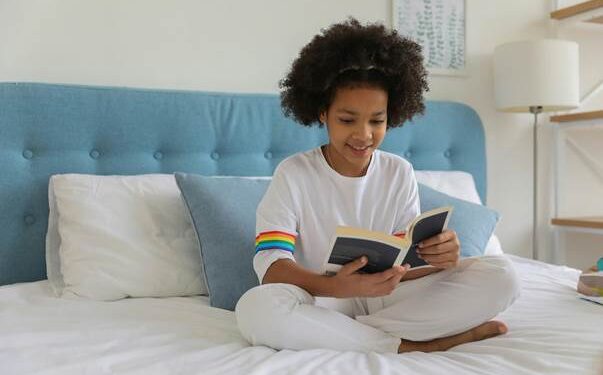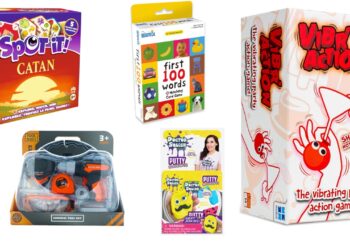
There’s a moment in childhood when books stop being “for kids” and start becoming tools for life. Between roughly ages 10 and 12, children move from “learning to read” into the harder, richer territory of “reading to learn.” It’s a transitional stage where curiosity explodes, identity forms, and small daily habits either seed — or squander — a lifelong appetite for reading. Get this stage right, and you give a child vocabulary, empathy, focus and the confidence to wrestle with complex ideas. Let it drift, and social media, games and fragmented attention can win the day.
“Books give children a safe space to explore new ideas, test out possibilities and imagine life through someone else’s eyes,” says Nalani Singarum, Academic Advisor at ADvTECH Schools. “They strengthen critical thinking, boost vocabulary and build empathy — all skills that help pre-teens navigate school and friendships with more confidence.” ADvTECH’s classroom programmes such as Booktacular aim to make reading less like homework and more like habit-forming play.
Science backs the urgency: paper matters, timing matters
A 2024 study from Teachers College, Columbia University adds a striking scientific push behind this advice: children aged 10–12 process printed text more deeply than digital text, showing brain responses consistent with “deeper reading” and better comprehension when reading on paper rather than screens. For educators and parents, the implication is clear — when possible, offer physical books for complex or reflective reading, especially during this crucial window.
Researchers and literacy experts describe the same developmental arc: as children approach the upper elementary and early middle-school years they transition from decoding words to using reading as the primary tool for learning new subjects. This “reading to learn” shift is exactly why ages 10–12 are a make-or-break period — the habits formed here determine whether reading remains a vehicle for discovery or becomes a chore displaced by screens.
Why habits at 10–12 matter — the practical payoffs
-
Stronger comprehension and school performance: As texts get denser across subjects, confident readers build the background knowledge and vocabulary needed to succeed.
-
Bigger vocabularies and better expression: Regular reading exposes children to varied sentence structures and new words — the raw material of clear thought and writing.
-
Greater empathy and perspective-taking: Experimental work shows that narrative books help children practise perspective, a cornerstone of social intelligence. Books are “mirrors and windows” — they let readers see themselves and other lives.
How parents can build a reading-rich home (practical, bite-size moves)
Pre-teens want more independence — but they still look to adults for cues. Simple daily rituals matter more than heroic interventions.
-
Side-by-side reading before bed: Each person reads their own book for 10–15 minutes, then share a favourite line. It signals that reading is for everyone (devices don’t count).
-
Everyday reading moments: Let kids read maps, menus, instructions or the next clue in a treasure-hunt riddle — reading’s usefulness lives beyond school.
-
Wordplay challenges: A “word of the day” picked from a book becomes family sport — use it naturally in conversation for a playful mastery boost.
-
Mini book clubs or swaps: Peer recommendation is powerful. Encourage friends to swap titles or host a once-a-month book chat.
-
Let kids choose: Autonomy is king at this age. Offer genres (mystery, sports, fantasy, graphic novels) and let choice drive momentum.
These are not novel gimmicks — they are evidence-friendly routines that build the habit without moralising. Parents who read aloud or model reading make it more likely a child will persist, even as digital distractions intensify.
What schools can do (beyond worksheets)
Classrooms are social laboratories for reading habits. When schools invest in structured, joyful programmes rather than piecemeal exercises, they multiply the odds that children stay hooked.
-
Structured programmes: Book clubs, literature circles, creative “book review in a bag” projects and visual-literacy tasks make reading active and communal. (ADvTECH’s Booktacular is one model that pairs curriculum with playful, role-based reading activities.)
-
Encourage physical reading times: Designate no-tech reading periods and build classroom libraries that entice rather than intimidate.
-
Teach comprehension strategies explicitly: The move from decoding to comprehension requires instruction in inference, summarising, and synthesising across texts.
-
Use texts that mirror students’ lives: Representation matters — seeing oneself in stories fuels engagement and identity formation.
Trouble signs — and how to respond
If a child resists reading, don’t panic. It’s rarely permanent. Try these course corrections:
-
Swap formats: audiobooks plus follow-up discussion can bridge the gap between screen habits and book comprehension.
-
Lower the stakes: short, high-interest books (graphic novels, short mysteries) can re-ignite pleasure.
-
Match to strengths: for visual learners, combine images and text; for kinesthetic learners, link reading to hands-on projects.
-
Celebrate small wins: finished chapters, a shared quote, or a successful book swap are fuel for momentum.
A final, urgent note
This age band — 10 to 12 — sits on a knife-edge. Neuroscience, literacy research and decades of classroom insight converge on one practical truth: create pleasurable, regular reading experiences now and you vastly increase the chances a child becomes a lifelong reader. Do nothing and reading becomes one battle among many for attention in an increasingly fractured media environment.
“Between ages 10 and 12, children are shaping their identities,” Singarum reminds us. “Books offer them mirrors to see themselves and windows to step into lives very different from their own. When we nurture a love of stories, we’re not only supporting school success — we’re giving our young people tools for life.”



































